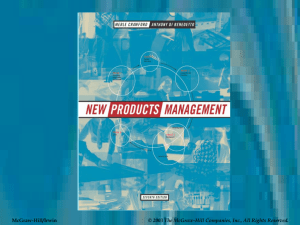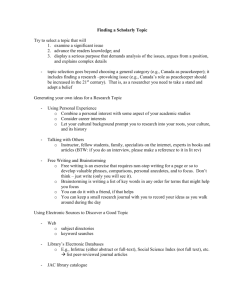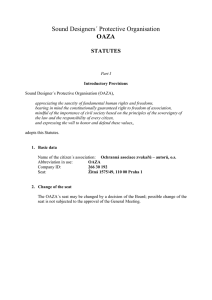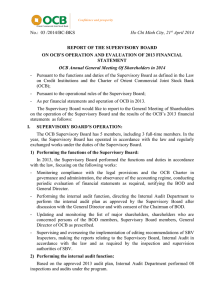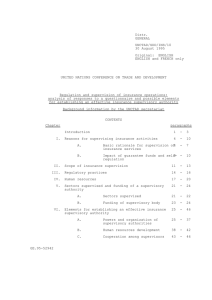Job Analysis
advertisement
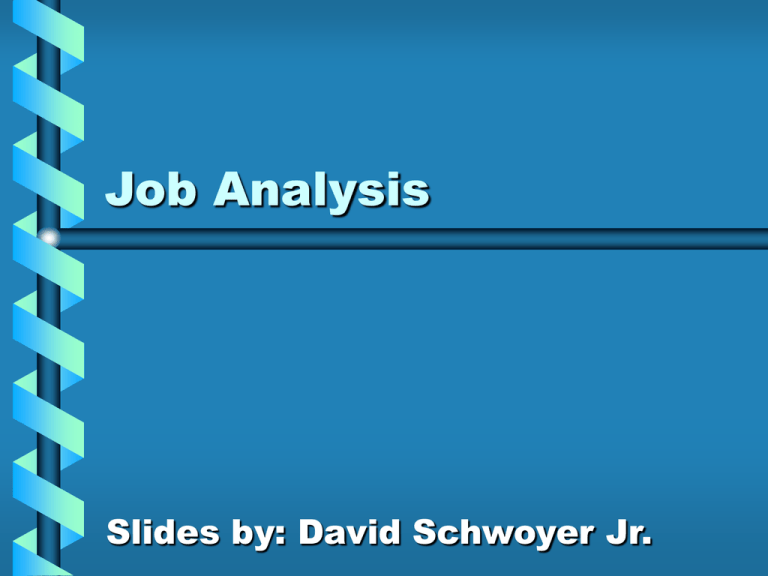
Job Analysis Slides by: David Schwoyer Jr. What will be covered • • • • • • • • Discuss the topic Define tools used Interactive exercise Explanation of topic How it works Real world examples An exercise Summary Job Analysis • What is the basis of job analysis? • To create the position you need, you must first analyze the tasks that you need done. • You must accurately describe the job and determine it’s specifications. Job Analysis • Unorganized data has little use. • Only concerned with facts. • Concerned only with the job, not the worker. • Not “job classification”. • Required to determine job qualifications? • No, but planning is the key to success. Tools used • Books and Literature – Valid information on current job analysis and studies. – Job analysis that are being implemented by other successful companies. – Past and present failures and successes. Tools cont.. • Flow and Organizational Charts – Very helpful for showing past and current information. – Show trends and similarities. Brainstorming Exercise • Break into groups. – Elect a spokesperson and a scribe. – Collectively write down what types of jobs in your organization would benefit from job analysis, and reasons for each. Brainstorming cont… • What were the results? • Example types of jobs: – – – – Newly formed jobs Old preexisting jobs Union jobs Jobs that have come under discriminatory recognition. – Basically all types of jobs can and should be analyzed. Brainstorming cont… • Reasons for job analysis: – New position needs to be created. – Old job has become unproductive. – Better define the role of the employee. – Union demand for a revision. – To develop nondiscriminatory standards (primarily women and minorities). Explanation • Job analysis is a multi-stage process. • The first stage is for the “analyst” to become as familiar as possible with the job. • This entails: – Background research. – Using the tools defined earlier such as: • Books and literature. • Flow and organizational charts. Explanation cont… • The information gathered in this first stage will serve for a variety of purposes – Mostly for recruitment and selection, but also wage and salary levels. Explanation cont… • A national survey of job analysis methods explains some of the ways organizations are using job analysis: – In job evaluation: • Appraising performance • Determining profit-sharing – In recruiting: • Creating job specifications • Matching the right people with jobs – In labor and personnel relations: • Establishing authority • Establishing communication channels Explanation cont… – In utilization of workers: • Organizing and planning • Controlling costs – In training: • Developing training courses • Orienting new employees Explanation cont… • Job analysis is a complex process and will require the participation from several individuals within your organization. • Using the skills and expertise of other personnel will bring more clarification upon your analysis. Explanation cont… • The individuals playing a role in job analysis can be: – Top Management – Supervisory Management – A Consultant (Not always necessary) – Employees – Union Individual roles • General Management – Establish a need for the program – Resolve conflict • Supervisory Management – Review and approve the results – Implement the program • Employees – Add their on hand experience – Bring up any facts unknown by management Individual roles cont… • Consultant – Advise the analyst – Give another point of view • Union – Negotiate with management – Appoint representatives Areas covered • The analysis should cover 7 areas. – Work activities – The job context – Tools, machines, equipment, and work aids – How the job is performed Areas covered cont… • 7 areas… – The personnel requirements for the job – Job relationships – Job related tangibles or intangibles Second Stage • The second stage in job analysis is to organize you information into a type of “job description”. Second stage cont… • A “job description” will generally summarize the position you have analyzed. • It will portray to the future employee the basics of the job with out having to go into extreme detail. Survey • A survey can be given to managers and supervisors to see exactly how much they are using the information provided. • The survey can be a questioner. • Question? – What do you think the information is primarily being used for? Answer • The information is most commonly used for job evaluation and for setting wage and salary levels. Real World Example • In 1990 congress passed the Americans with Disabilities Act (ADA 1990). – This act was designed to aid employees with disabilities in the working world. • Job analysis has played a key role in companies compliance with this Act, as well as aiding thousands of disabled Americans. Exercise • Compose a list of the possible benefits and disadvantages of job analysis. – Break off into your original groups to answer the question. Answers • In most cases the list of advantages severely outweighs the disadvantages to the organization. • This shows us that job analysis is a practical tool for businesses today. Summary • Using job analysis you can define what makes each job what it is in the organization. • This leads to better performance and more efficiency from the work force. • And with better performance and efficiency comes a smoother running more profitable company. Bibliography • Schaubroeck, John. “A field experiment testing supervisory role clarification.” Personnel Psychology Spring 1993; 1-4. • “Sample Job Analysis Questionnaires to Define the Duties of a New Job.” Internet. http://www.lycos.com/business/cch/to ols.html. 14 February 2001. Bibliography cont… • “Overview.” Internet. http://www.hrnext.com/content/v iew.cfm?articles_id=398&subs_i d=120. 14 February 2001.



